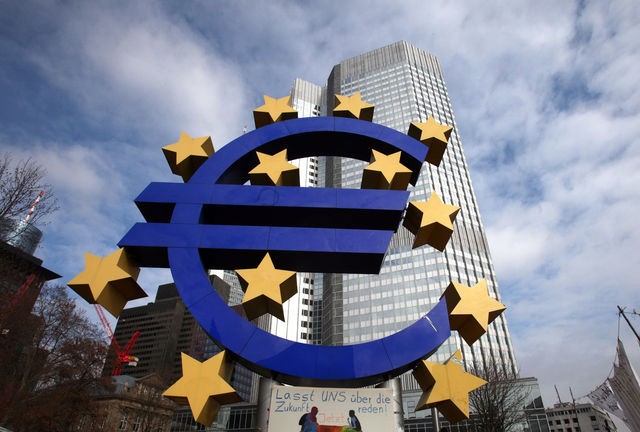Putting Deflation First by Barry Eichengreen Project Syndicate
Post on: 14 Сентябрь, 2015 No Comment

CAMBRIDGE – The European Central Bank is moving, hesitantly but ineluctably, toward quantitative easing. The threat of deflation – and the ineffectiveness of its previous measures – leaves it no choice. The question is whether the ECB will be able to move quickly enough.
The ECB has already attempted to ease credit conditions by purchasing high-quality asset-backed securities. It has bought securities backed by cash flows from private-sector mortgages, so-called covered bonds, and it has floated the idea of buying corporate bonds and multilateral securities issued by the European Investment Bank.
But it is clear that this will not be enough. Supplies of private-sector securities are limited, reflecting the dominance of bank lending in Europe and depressed sentiment in securitization markets. Augmenting the supply of such securities will take time, which is not something European policymakers possess.
For all these reasons, purchasing private-sector securities alone will not enable the ECB to achieve its stated goal of expanding its balance sheet by €1 trillion ($1.2 trillion). Unable to vanquish the specter of deflation, ECB President Mario Draghi will need to continue working to build a consensus – even better, unanimity – within the bank’s governing board for purchases of government bonds.
But Draghi and his colleagues will proceed in small steps, given fears in Germany that quantitative easing is just another name for runaway inflation. Initially, the ECB will buy a small volume of government bonds; when this fails to produce economic Armageddon, it will begin to scale up its purchases. We can expect to see the first of these baby steps in January.
The problem is that this kind of incrementalism will not work. When the problem is deflation, quantitative easing will help only by transforming expectations.
When deflationary expectations are entrenched, as they are in Europe today, consumers and investors delay spending on the ground that prices and costs will be lower tomorrow. Those expectations become self-fulfilling, because less spending means even less inflation and, in the worst case, falling prices.
Deflationary expectations can be transformed into inflationary expectations – thereby encouraging more spending – only by policies that induce shock and awe. Dramatic measures are needed to convince households and firms that the future will be different from the past. The central bank needs to convince them that it will do “whatever it takes,” as Draghi put it in July 2012, to jolt the economy out of its deflationary lethargy.
That is what the Bank of Japan, under Governor Haruhiko Kuroda, is attempting to do. But the ECB seems temperamentally incapable of adopting the same approach, given fear and loathing in northern Europe of radical monetary action.
Opponents of quantitative easing worry that it augurs inflation – a peculiar position, given the European economy’s current slack. They worry that securities purchases will sow the seeds of another financial bubble and bust. This too, is a peculiar fear, given that financial markets are now subject to much more stringent regulation.
The most influential objection to quantitative easing is that it will relieve the pressure on European governments to reform. According to this moral-hazard argument, the authorities will push ahead with painful labor- and product-market reforms and pursue the fiscal consolidation needed to gain the confidence of investors only if they remain under the gun. If the ECB purchases their bonds, governments will be able to ignore market pressure.
In fact, those who advance this view – which is the most powerful obstacle to radical ECB action – have their analysis upside down. Under current conditions, with the inflation rate dangerously close to zero, governments are reluctant to do anything that increases the risk of deflation. And structural reform and fiscal consolidation are both deflationary in the short run.
Fiscal consolidation means less public spending. And less spending means less upward pressure on prices – which is the last thing Europe needs in a deflationary environment.
Structural reform that increases the flexibility of labor and product markets is deflationary as well. Enhancing wage flexibility in an environment in which unemployment exceeds 11% will allow firms to cut wages, and lower labor costs will permit them to cut prices in an effort to gain market share. Deregulation that intensifies product-market competition will similarly lead to lower prices (that being what competition does).
In other circumstances, these would be positive outcomes. Indeed, Europe does stand to reap significant benefits from fiscal consolidation and structural reform – but in the long run, not in the short run, when the problem is deflation. And European governments know it.
It follows that the best thing the ECB could do to encourage fiscal consolidation and structural reform is to banish the specter of deflation. Only full-bore quantitative easing can do that. Those who object that such audacity would discourage fiscal consolidation and structural reform should consider what deflation would do.














